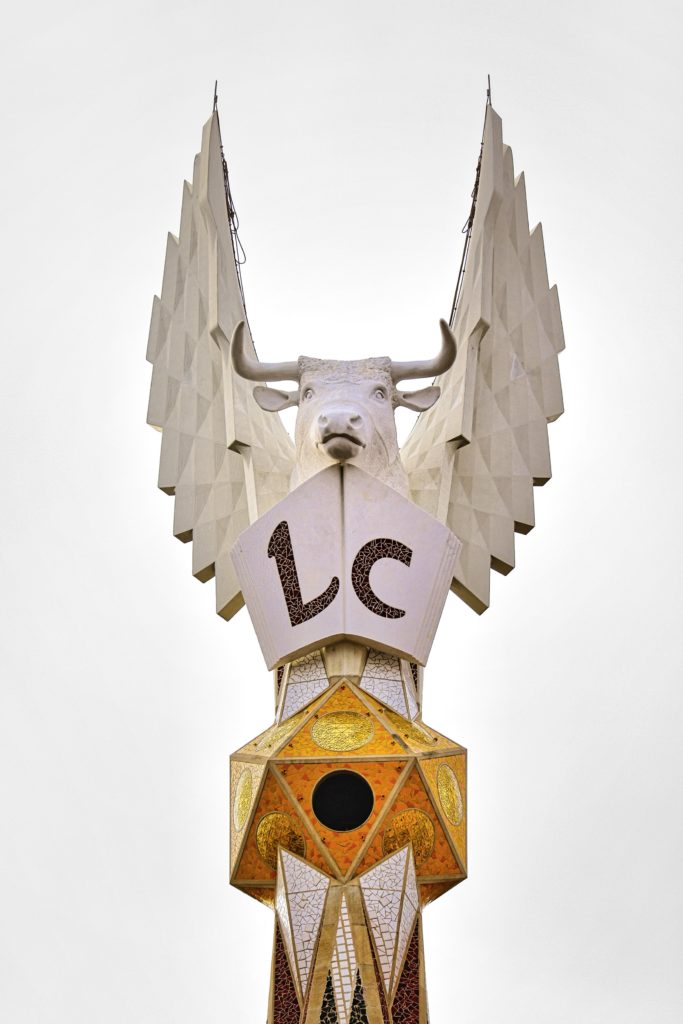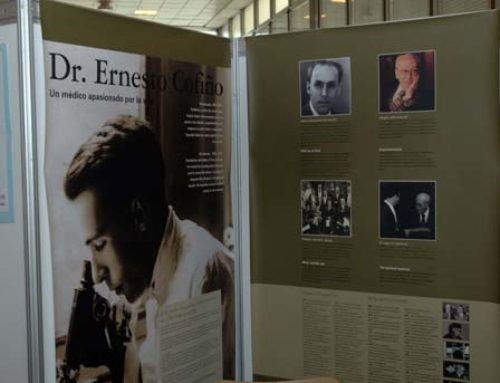
San Lucas (Buey alado). Basílica de la Sagrada Familia. Barcelona.
FIAMC Press Services
Pro-Life Physician and Evangelist
Feast day: 18 October
Saint Luke the Evangelist was a doctor from Hellenic Syria. He was called “Our Beloved Luke, the Physician” by his fellow traveler, the peripatetic Saint Paul of Tarsus (Col. 4:14). Evidence of Saint Luke’s medical background is peppered throughout his gospel. For example, when the other two synoptic evangelists recorded Christ’s warning that a rich man will have no more ease passing through the gates of heaven than would a camel passing through the eye of a needle, they use the household term for a woman’s sewing needle. Saint Luke, on the other hand, uses the Greek word for a surgeon’s suturing needle. At another point, in telling the story of the woman who suffered from hemorrhage, Saint Luke – keenly aware of the mercenary pitfalls of our profession — adds the sardonic observation that the woman had already spent all of her money seeking the advice of many physicians, and yet had been helped by not one of them (Luke 8:43-48 vs Matthew 9:20-22) Luke alone of the evangelists recounts Christ’s stunning allegory of compassion and selflessness in the context of providing healing care for the helpless, the injured and afflicted — the Parable of the Good Samaritan (Luke 10:29-37)
An inherently pro-life physician, Luke uses the same Greek word for “baby”, whether writing about a baby in the womb or about a babe in the manger. And it is he who recounts how Saint John the Baptist, while still in the womb of Saint Elizabeth, leapt for joy at the approach of Jesus, also unborn but very much alive, within the womb of his Virgin Mother (Luke 1:39-45). Finally, it is within the Gospel of Saint Luke, that Jesus makes his only reference to us practitioners of medicine: “Physician, heal thyself!” (Luke 4:23).
The Holy Gospel according to Holy Mary, the Mother of God
The Gospel of Saint Luke is suspected by some of having been dictated to Saint Luke by Saint Mary herself. It is true that Saint Luke played an extraordinary role in the life of the early Church. As one of the four evangelists, he was the author not only of one of the Gospels, but also of its sequel – the Acts of the Apostles. However, Saint Luke came late to the game. He was neither an apostle nor even an early disciple. There is no way that he could have personally witnessed the most intimate details of Saint Mary’s life with her son and Saint Joseph. – The Annunciation of the Archangel Gabriel. The Visitation with her cousin, Saint Elizabeth, and her unborn baby and prophet-to-be. The wondrous Nativity of a celestial King born in a manger. Throughout the mysteries of the Holy Rosary, in moments both of grief and of glory, Mary was there at her Son’s side. And Saint Luke, inspired by the Holy Spirit, devotedly records her narrative – the greatest ‘as told to’ autobiography in salvation history! Without Luke’s Gospel, we would have neither the Hail Mary nor the Magnificat.
“Holy Mary, Mother of God, join in prayerful intercession with Saint Luke, the beloved physician, to pray for us sinners, now and at the hour of our death. Amen.”
Dr. Richard Watson, Past President Catholic Medical Association (USA)
……………………………………………………………









